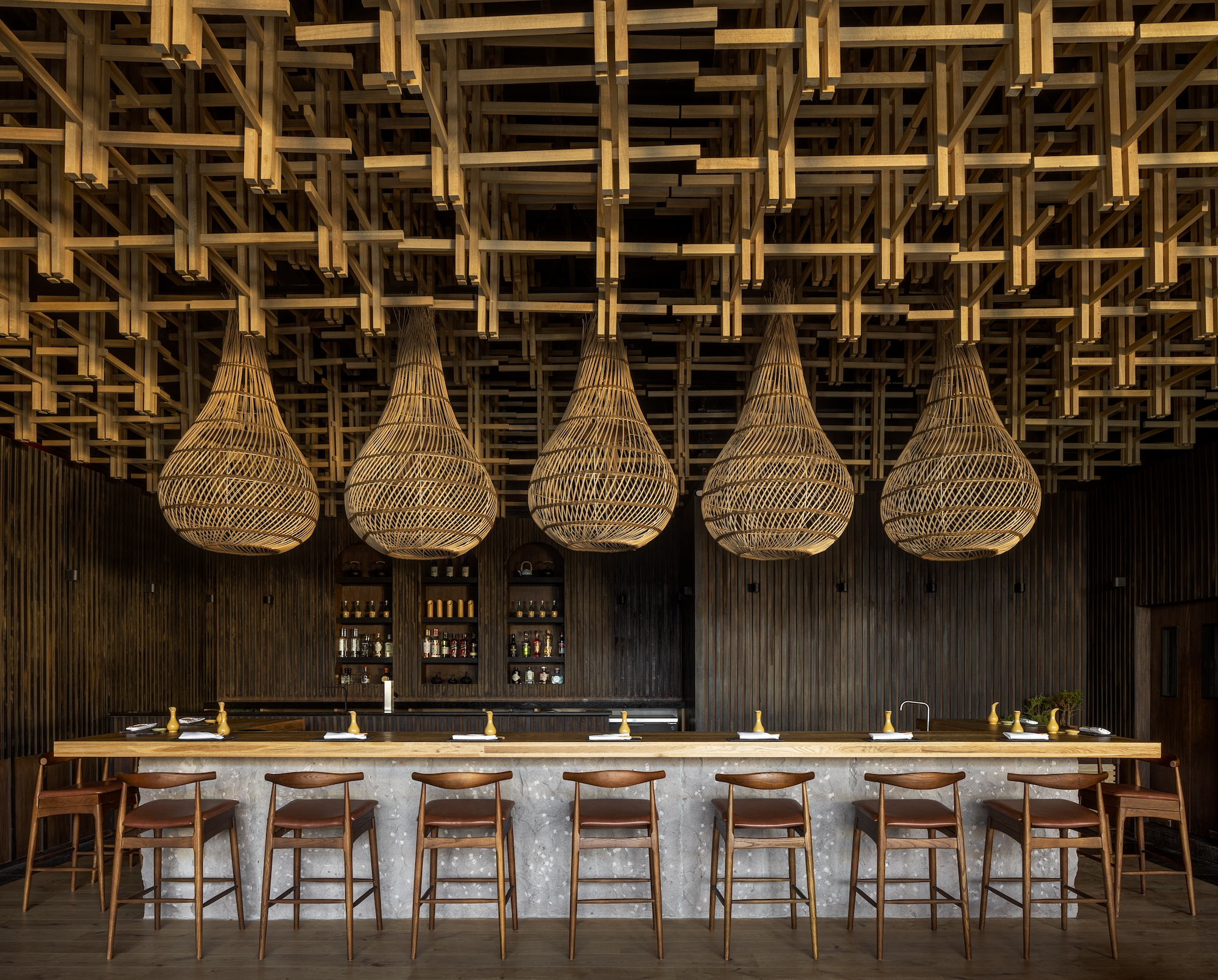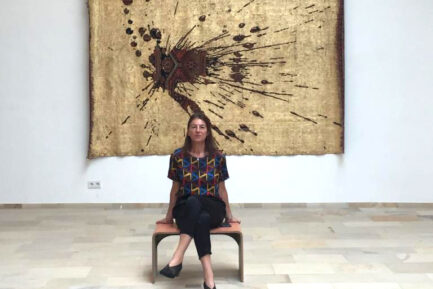Inspired by the Japanese philosophy of Wabi-Sabi, Mexico’s hottest new restaurant Nama is a flurry of contradictions that results in one suitably stylish space.
The world’s most beautiful restaurants are about so much more than excellent food. Many are architectural marvels complete with unique interiors and decor that elevate the holistic dining experience to whole new heights. The newest design hotel on our radar can be found in the fashionable Mexican city of Querétaro which, as an ode to all things Japanese, is already taking the region’s culinary landscape by storm – so much so that it has just been awarded top prize in the PRISMA Mexican Interiors Award in the Restaurants 2023 category.
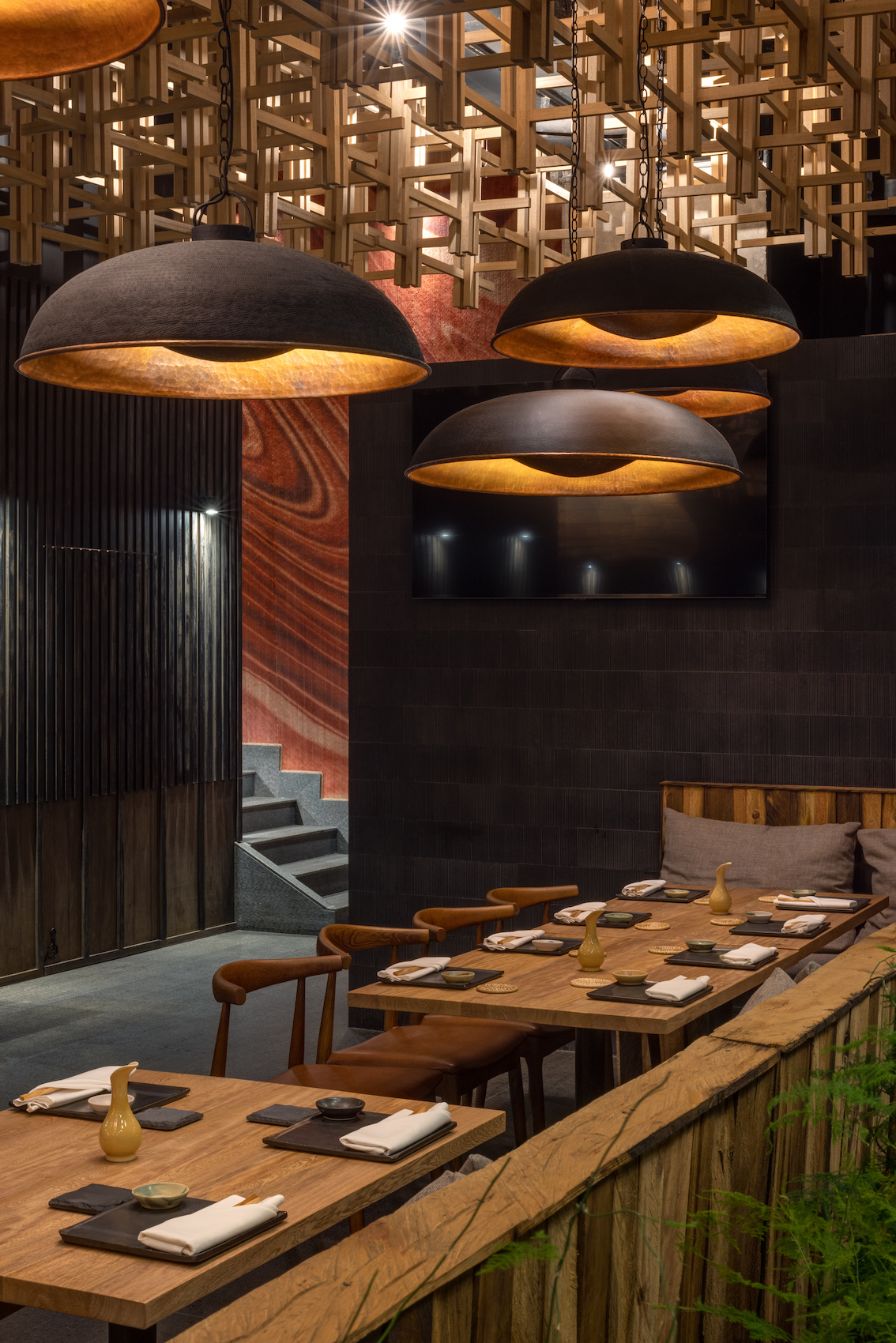


Brainchild of Mexican interior designer Claudia Ornelas, with architecture by anonimous, Nama was inspired by the Japanese Wabi-Sabi philosophy, an aesthetic that finds beauty in imperfection. “It’s a traditional Japanese aesthetic interwoven between its culture and landscapes,” Ornelas tells Effect. “I love it because it gives importance to the age of things and objects in their history, memories and imperfections that make them unique.” To this effect, the team installed an oak-veneered wood structure for the ceiling based on Japanese assembly techniques, coarse-looking plaster with rough wood furniture detailing regional tree trunks, mirrors with the wavy shapes of Suminagashi art, and traditional copper lamps throughout.
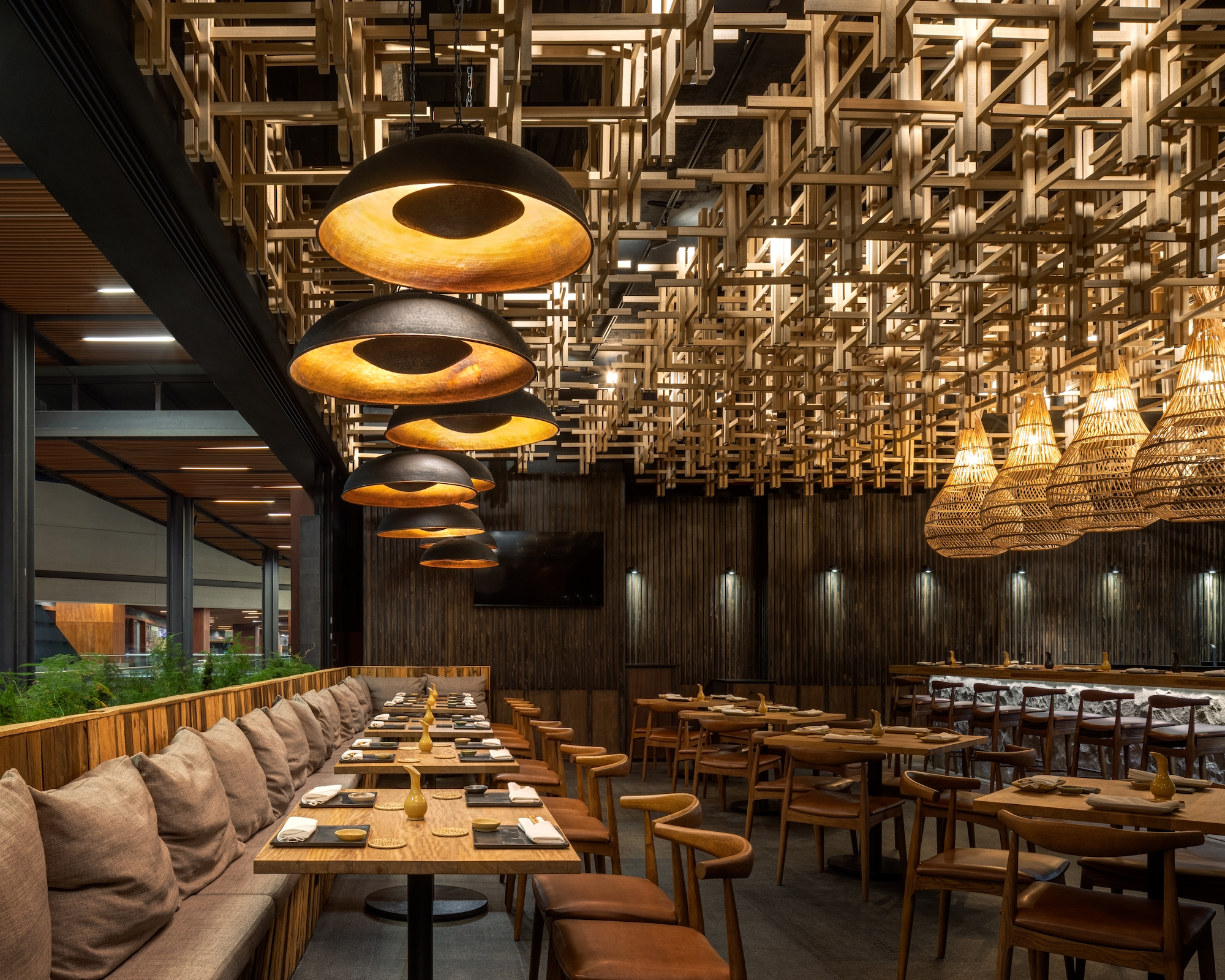
Spanning 2,400 square feet of space, Nama is defined by a variety of organic shapes and natural materials including wood, stone, copper and wicker. Perhaps the most important feature of the double-height space, the Nigiris bar is crafted of stone sourced from the region and contrasts with the oak deck, while the wicker lamps suspended over the bar are reminiscent of traditional baskets used for lobster fishing. “The Nigiris bar synthesises the aesthetics of the place very well,” explains Ornelas. “The front is made of a totally organic piece from a local quarry.”
The brand-new restaurant is also a place where opposite attracts, with Ornelas blending the light with the dark and the smooth and the rough to achieve a subtle balance throughout. As such, for AR Taller de Diseño’s carpentry, you’ll find wood in light tones veneered in oak with smooth textures, and darker woods with antique finishes and rough textures.

And thanks to a connection between the interior and the exterior, Nama gives the feeling of being on a light-filled terrace, even though the whole of the restaurant is indoors. A continuous linear seat runs the entire length of the facade, delimited by a planter that creates harmony between the space and nature.
It was essential for this project to use objects and textures that met a ‘handmade’ quality…. In Mexico, we have great artisan hands always willing to experiment in finishes and textures to give the right look for each project.
Claudia Ornelas
Housing pieces made by expert craftsmen from different regions of Mexico, Ornelas worked with local artisans to develop the restaurant’s very specific finishing and textures. The circular copper lamps placed above the tables, for example, were made by La Mexicana Galería from the west of Mexico, who used a special hammering to give the metal an almost textile quality. The palm woven panels found on the staircase that leads to the bathroom, on the other hand, were made by craftsmen from HIATO Creativo in the state of Guerrero and sublimated by the Japanese technique of Suminagashi.
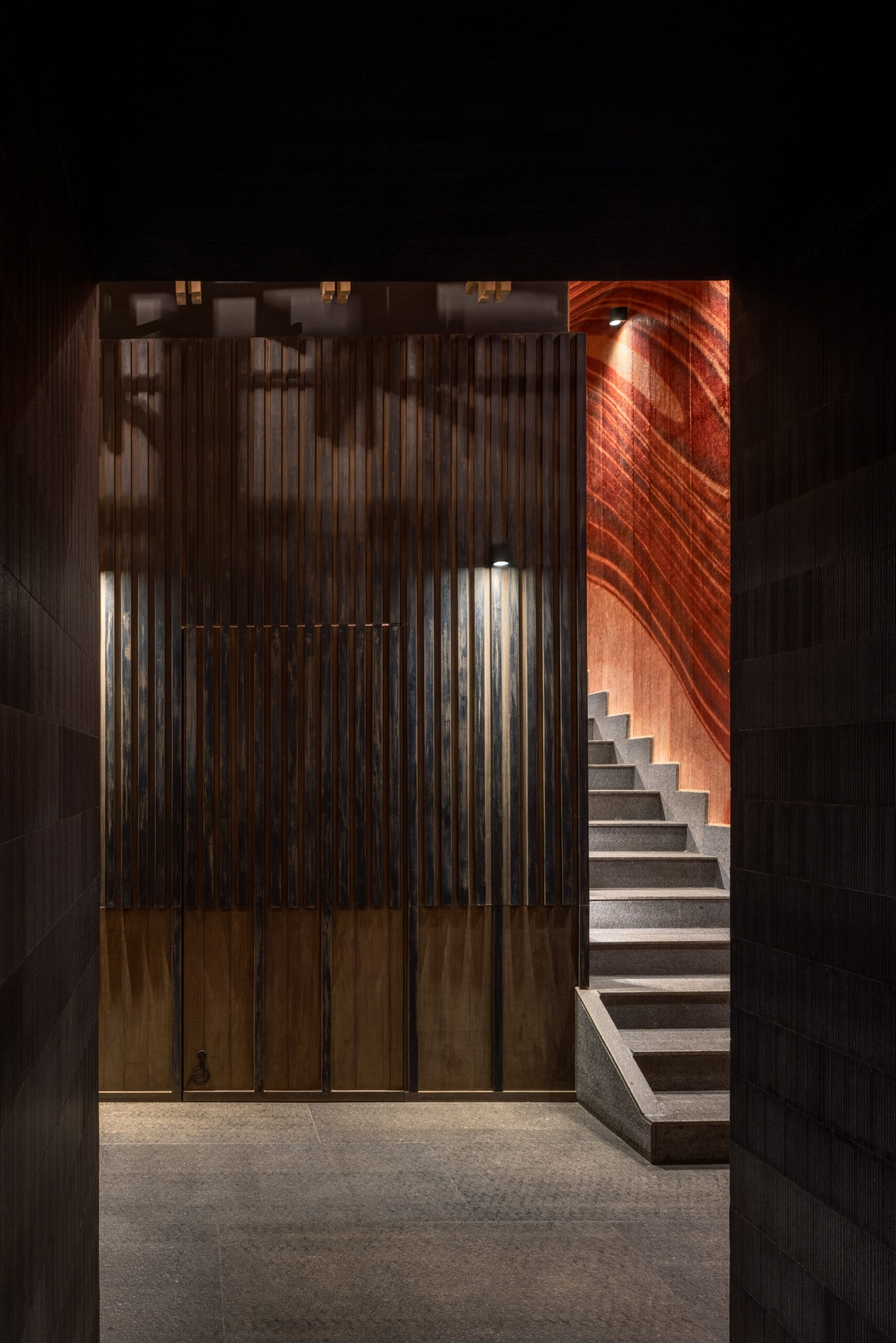
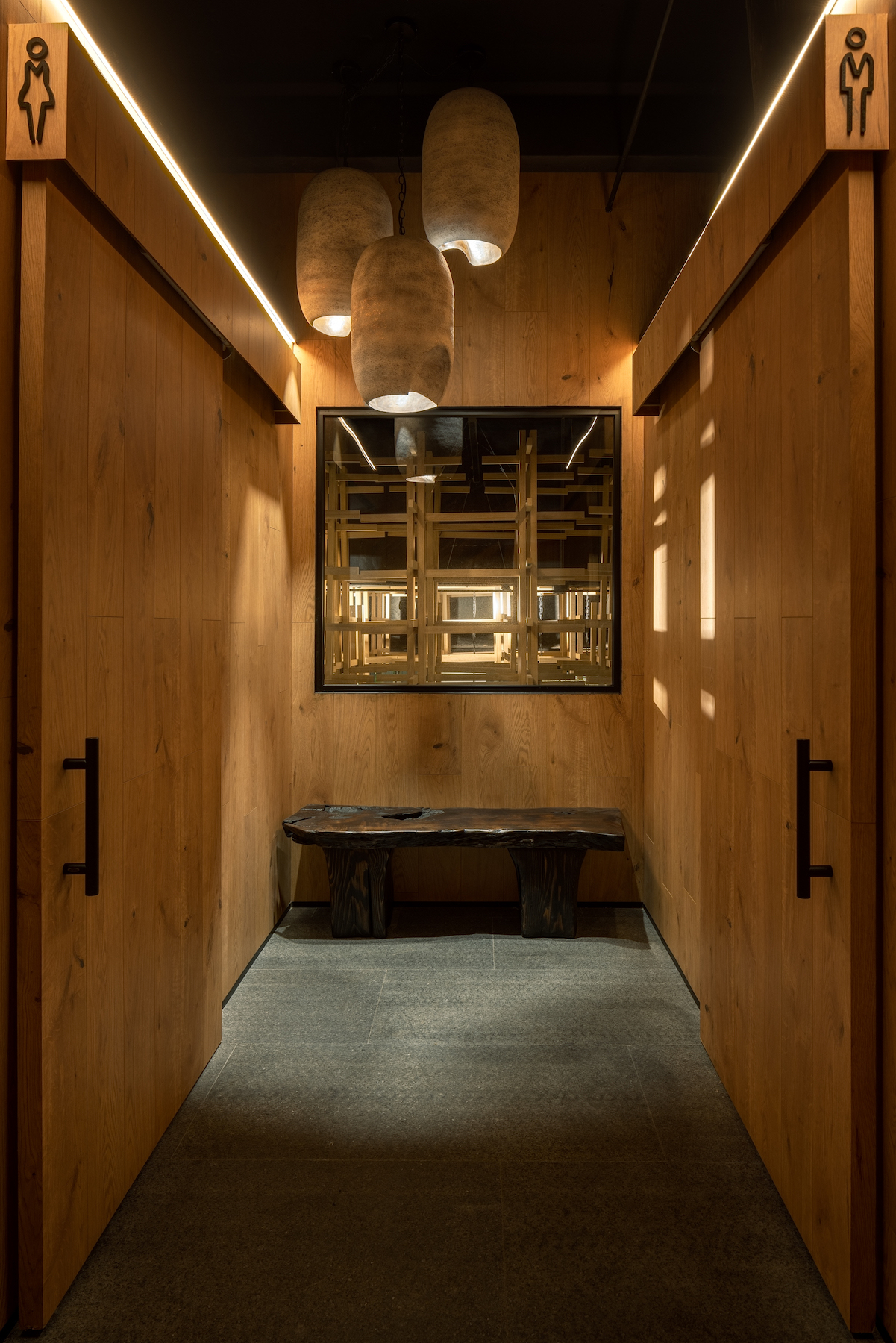
Other local sources include Telas de Pani for textiles, Chapoy Furniture for tables and chairs, and Dei Domotic for lighting. “It was essential for this project to use objects and textures that met a ‘handmade’ quality,” Ornelas tells us. “By using pieces like this you can appreciate those details that give each piece a unique character. I think it is important to know your environment and know how to take advantage of it to communicate what you need in each project. In Mexico, we have great artisan hands always willing to experiment in finishes and textures to give the right look for each project.” If Nama is anything to go by, they certainly do.
Read more: Design | Interior Design | Design Restaurants | Mexico



